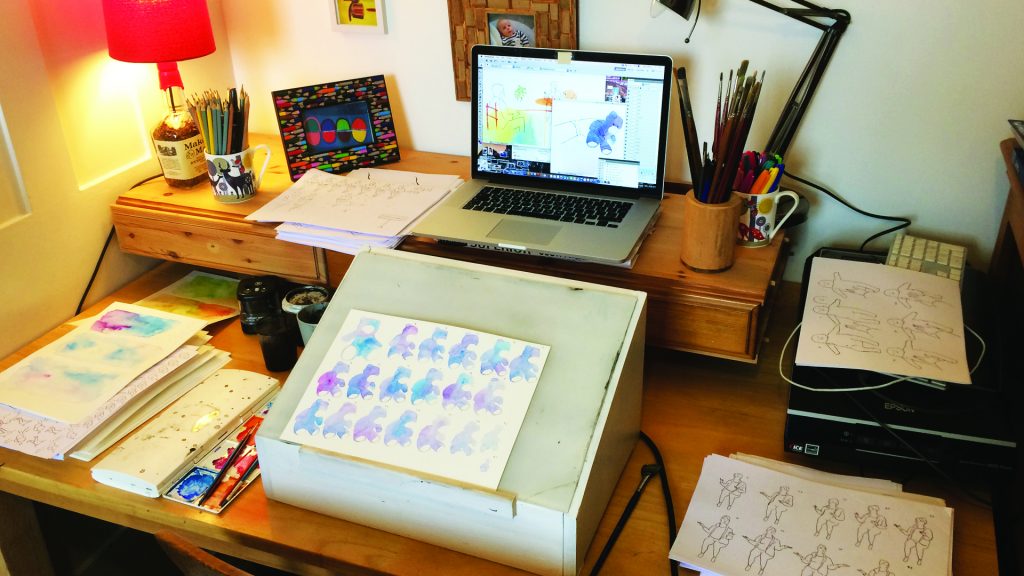We launched our latest animation this week – the centrepiece in a series of content focussed on the issue of sex workers’ rights and safety. In this article, EachOther’s Creative Director Sarah Wishart writes about the process of creating the animation and its impact.
Our latest animation visualises issues raised by campaign group the English Collective of Prostitutes (ECP) in its research project, “What’s a Nice Girl Like You Doing in a Job like This?”
The project reveals the similarities, and crucial differences, in the pay and working conditions of sex workers and jobs traditionally done by women – including teaching assistants, nurses and midwives.
The film was made from more than 7,000 (!) watercolour images hand drawn by animator Tom Senior, who I had been wanting to work with for some time now. We originally talked last year when EachOther was raising funds to make three films about the NHS and human rights and Tom was ready to create an animation on midwives’ work. In the end, we only raised enough to make one animation, but the idea continued to percolate.
So, when we won a new commission to make an animation based on the ECP’s research, I immediately resurrected the concept, not least because one of the testimonials in the research had come from a midwife. It might seem contentious to position a midwife and a sex worker together in the same space. But in May, the Royal College of Nursing (RCN) voted overwhelmingly to lobby the Government to fully decriminalise sex work.
Specialist nurse Louise Cahill, who spearheaded the RCN’s move, told EachOther: “This animation shines a light on the difficult working conditions women face in the health service.
“By a drawing a parallel with sex work, it throws reality into sharp relief. It makes obvious that criminalisation won’t improve working conditions but rights will.”
I had been struck by a piece of Tom’s earlier work called “Sunday Morning” and envisaged something similar but more colourful – a beautiful, vibrant watercolour animation. I wanted to use gentle and beautiful artwork that would enable a wide range of audiences to engage with stories on sex workers’ rights and for this issue to be considered by different kinds of people.
Double BAFTA-winning animator Jonathan Hodgson, who originally introduced me to Tom, believes this has worked. He said: “Tom’s fluid and sensitive watercolour animation perfectly complements the powerful, personal stories of the women contributors. This is a beautiful and remarkable animated film by one of the UK’s most underrated artist animators.”
“Animation is a really powerful tool”

Image credit: Tom Senior.
Hand-drawn animation is a rarity these days because of the time and effort needed to complete such a herculean task. Tom was excited by the project, seeing it as a rare opportunity to create something wholly hand-drawn.
Unfortunately, perhaps due to the amount of work involved, animations in this style are not commissioned as often as they once were. I found that the process helps me to focus on each drawing as a unique illustration, rather than a small part of a sequence of movement.
Tom Senior, animator
Explaining the nature of the project, Tom said: “There are 12 separate frames for every second of animation, but often each frame contains a series of drawings. The film is composed of roughly 4,000 separate drawings, however, including the drawings that were made during the rough process, this number is likely to be about 6,000 to 7,000 in total.
“Usually when creating traditional frame-by-frame animation, each drawing is made on a separate piece of paper, however I chose to save paper by drawing several frames on each sheet. This saved time on scanning but increased time during the edit. This method meant that I was able to draw the film on roughly 1,000 sheets of paper as opposed to several thousand.”
Impactful animation
Animation is a really powerful tool for getting people to think about issues in new ways. In a former role, when I was touring the country for the pilot of the Royal Society of the Arts’s Student Design Awards, I used to get design students to watch this incredible film which Creative Director Richard Beer made for environmental NGO Greenpeace.
It depicts a wintery Lego scene – replete with ice skaters, wolves and polar bears, being subsumed in a rising tide of oil.
The animation went viral and, shortly afterwards, Lego broke ties with oil company Shell – which has come under criticism for its plans to drill in the Arctic.
I don’t imagine our little animation is going to get out to quite so many people. But we do want these stories to reach different kinds of audiences, and for sex workers rights to be considered in a different way. We want to inspire people to think again about human rights and to increase the number of stories from people in under-represented groups.
Want to see more creative projects on EachOther?
- More animation: NHS and Human Rights and Human Rights Explained.
- Watch genocide survivors share their experiences in The Warning Signs.
- Take a look at other short films in our video library.
Featured Image Credit: Tom Senior.







